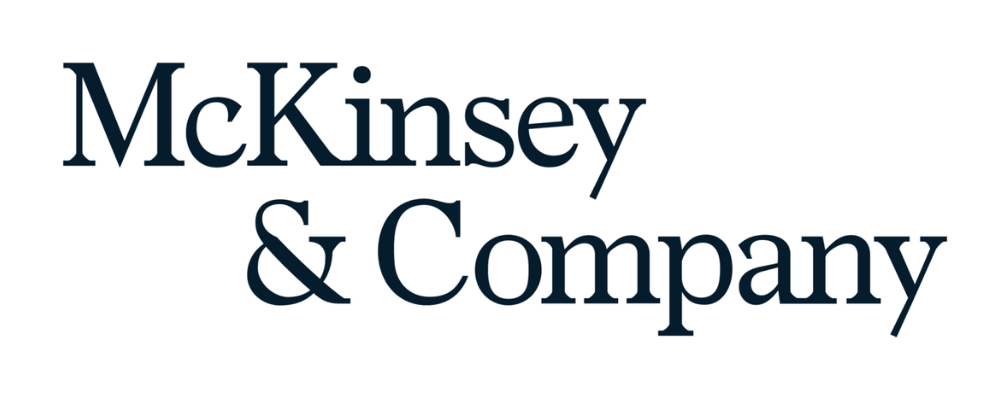Dilip Shanghvi established Sun Pharma more than 40 years ago, and since its founding, the Mumbai-based company has become the largest pharmaceutical company in India and is active in more than 100 countries across the globe. After four decades, Shanghvi has succeeded in developing the company by approaching bold risks in a calculated way, balancing resilience and innovation. But he hasn’t done it alone—Shanghvi has also prioritized building a collaborative and loyal team with a similar mission-driven mindset that allows the company to continuously grow and reach new markets.
McKinsey’s Asia Chairman Gautam Kumra sat down with Shanghvi to learn more about his journey building a multinational company and his current strategy to stay competitive. In their discussion, Shanghvi reveals how Sun has grown in myriad markets globally and how the company thinks about risk and innovation as it prioritizes long-term stability over short-term gains. He also emphasizes the value of loyal customers, employees, and stakeholders, and in investing in talent that demonstrates the ability to learn and adapt.
An edited version of their conversation follows.
Building a global business out of India
Gautam Kumra: Sun Pharma’s growth—going from a small generics company to a global pharmaceutical organization—has required navigating diverse markets, deploying targeted strategies, and scaling the business. When you reflect on your journey, what elements have been essential for success? What is your North Star?
Dilip Shanghvi: One is focus. We not only focused on finding ways to work with specialists in different therapy areas, starting with psychiatry, but we also had a singular focus on helping doctors upgrade their knowledge, treat patients more effectively, and give them access to products that could help solve patient problems. This focus has helped us grow in India.
Outside of India, we’ve tried to follow the same philosophy in emerging markets by selling branded generic products. In the US and European markets, success depended on being early to the market and cost-effective, so that’s what we focused on—being competitive in terms of speed of product development and cost of goods.
When we started, we were competing with companies that were much bigger than us, so we could be nimbler. Now, we’re one of the biggest players, so we face the challenges that come with size and complexity. To remain competitive, we’ve focused on business areas, such as specialty products, that would help us compete with larger players. Being more entrepreneurial and responsive will help us succeed in this space.
Ultimately, we believe we should be better in each of our businesses than we were last year. We look at what others in our industry are doing and try to learn from them, but each of our businesses needs to find a way to grow faster than the market, or at least faster than what it grew the previous year. The second belief is that there’s an opportunity to build a successful, multinational pharma business out of India.

Disciplined innovation and calculated risks
Gautam Kumra: As Sun Pharma has grown, how has your approach to innovation evolved? What does innovation mean in the context of your business today?
Dilip Shanghvi: The pharma business is knowledge intensive. To do well, you have to constantly update and strengthen your capabilities by keeping track of what’s happening globally and what’s working for people, then adapt your environment and culture accordingly.
Our philosophy is that if we understand 70 percent of an idea, we are prepared to take the risk and learn 30 percent along the way. For example, when we entered the specialty market, we knew very little—we didn’t know how to access the market, and we didn’t understand pricing or the various requirements in different geographies. To succeed, we had to learn. So, how can we adapt and learn about products and therapy areas? How do we compete with bigger companies? How can we find potential partnerships? Deciding which direction to go in is a gut-based decision, but deciding how to invest is a logical and rational process.
Gautam Kumra: You have a remarkable track record of acquiring struggling pharmaceutical companies and revitalizing them. For example, you acquired Caraco Pharmaceutical Laboratories in 1997 and acquired Taro Pharmaceuticals for $500 million in 2007, a potentially risky venture at the time because of the regulatory scrutiny and the integration challenges it posed. How do you balance the pursuit of growth and innovation with your appetite for risk?
Dilip Shanghvi: My current thinking is that it’s better for us to license a product that’s closer to market than to pursue long-term development cycles. If we want to truly innovate in India, the regulatory environment would have to change. I also believe it’s more advantageous to buy a company with an approved product because it takes a lot of uncertainty and risk out of the equation. It can also give us a faster entry into a therapy area we’re interested in.
My assessment metric for risk is, what is the worst-case scenario? And can I live with the worst-case outcome? For example, if we have a large upfront investment for the clinical development of a product, I will assess whether I can live with the cost before the product starts generating revenue. And in the worst-case scenario, if the product doesn’t succeed as we expected, can I live with that as an outcome? I always aim for the best case, but I prepare for the worst.
Another way of looking at it is that I will never risk capital, but I will risk profit: If a risk doesn’t play out as expected, the worst case should be that we may not make money that year, but we don’t lose the business or impair our ability to invest.
Loyalty as a long-term strategy
Gautam Kumra: You’ve spoken about the importance of building trust with stakeholders. How do you think about loyalty as a leadership principle, and how has it shaped the way you lead Sun Pharma?
Dilip Shanghvi: The structure of our business has been designed around the loyalty of employees, customers, and shareholders. For example, I try to consciously focus on investors who have a long-term time horizon. We make decisions that are in the long-term interest of the business, even if they might have some negative short-term impacts. I like to have shareholders who also have that philosophy.
For employees, it’s important to create a work environment where people feel comfortable taking risks to achieve significant progress because they will be evaluated for their contribution, not for their failure. Think of it like banking: Some companies operate with only a current account, but we have both a current and a savings account for each employee. For example, if someone did something great for me ten years ago, I will keep this in mind in the present day and still find value in that contribution. Or if someone changes roles within the company and doesn’t do as well in their second or third position as they did in their first, I will give them some leeway. Before I ask people for loyalty, I am prepared to be loyal to them.
Cultivating talent
Gautam Kumra: Sun Pharma emphasizes internal talent cultivation by engaging in industry–academia partnerships, such as the collaboration with Technion to foster innovation and develop local expertise. How do you develop, manage, and lead people, especially your top team?
Dilip Shanghvi: When I started the business, we had to hire the people we could afford. As the business demanded us to grow rapidly, the only way we could do that was by having those people deliver far beyond their normal capacity. That strategy helped us early on and is still critical today. If you hire capable people, it’s possible to get extraordinary performance from them.
If you’re fair and are prepared to invest in people and give them opportunities, then they will stay. Loyalty matters to us. But if we don’t have the capabilities we need internally, then we try to hire people [externally] who are culturally aligned with us. Interestingly, in our top team today, more than half of the people who report to me are new, and we have benefited greatly from their presence. We have committed to working with people who are capable of learning, but managing at scale is also important. This is how members of my top team have added value: they have managed at much larger scales than they are managing now. By creating opportunities for growth, we build a better future for all the people who’ve been with the company for a long time.
“Our firm is designed to operate as one—a single global partnership united by a strong set of values. We are equally committed to both sides of our mission: attracting and developing a talented and diverse group of colleagues and helping our clients create meaningful and lasting change.
From the C-suite to the front line, we partner with clients to help them innovate more sustainably, achieve lasting gains in performance, and build workforces that will thrive for this generation and the next.”
Please visit the firm link to site


